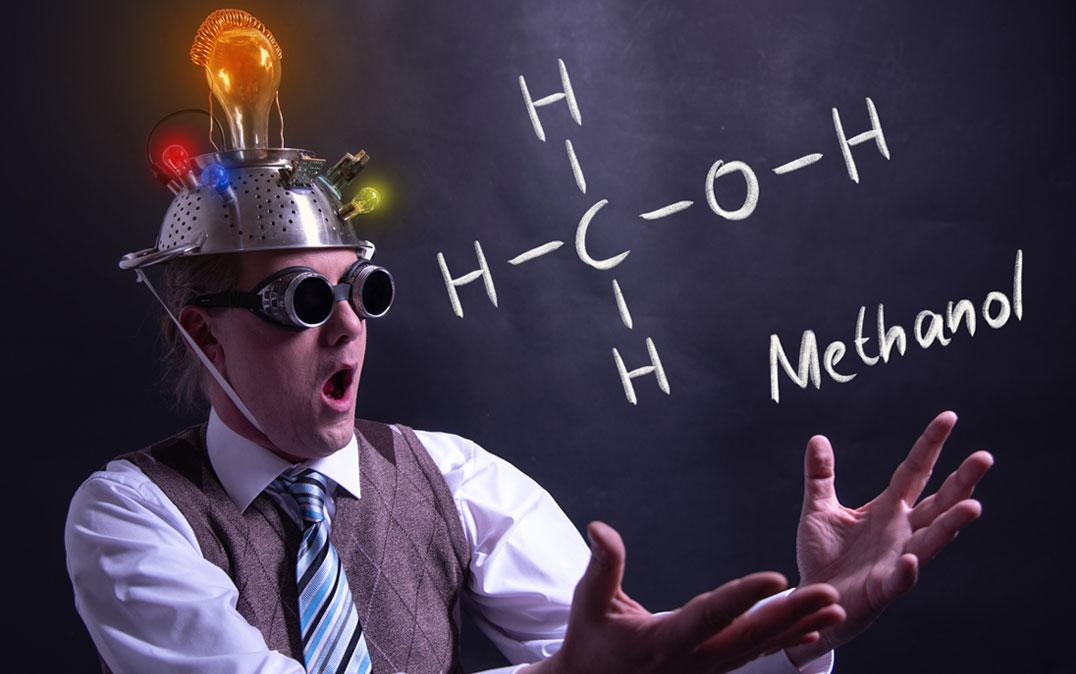Research News
Development of Iron Complex Catalyst for Selective and Efficient Conversion of Methane to Methanol
 Image by knipsdesign/Shutterstock
Image by knipsdesign/Shutterstock
A new iron complex has been developed as a catalyst for the oxidation of methane to selectively convert it to methanol. This complex can efficiently oxidize methane by internally trapping methane while preventing the overoxidation of the produced methanol. Using this complex, the direct and selective conversion of methane to methanol has been successfully achieved in an aqueous solution.
Tsukuba, Japan—Extensive research has been conducted on the oxidation of methane to obtain methanol for the production of useful compounds, such as formaldehyde, dimethyl ether, etc. However, methane is the most difficult hydrocarbon to be oxidized, and till date, to the best of our knowledge, no method has been developed to efficiently and selectively convert methane to methanol under mild conditions.
Inspired by the structure and reaction mechanism of naturally occurring metalloenzymes that oxidize methane, researchers have developed a mononuclear iron complex with a hydrophobic environment near the active iron center. Using this iron complex as a catalyst and a cheap and safe oxidant, they have accomplished the direct conversion of methane to methanol with high efficiency and selectivity.
In this reaction, the oxidation of methane proceeds under mild conditions of 50 °C temperature and ~10 atm pressure in an aqueous solution. The catalytic turnover number exceeds 500 in 3 h and methanol can be produced with a high selectivity of 83%. The achievement of such high efficiency and selectivity is owing to the presence of a hydrophobic environment near the iron center, i.e., the active site of the catalyst. The hydrophobic cavity traps methane (hydrophobic substance) and releases the generated methanol (hydrophilic substance) into the aqueous solution while preventing the excessive oxidation of methanol by suppressing its approach to the active iron center.
Such a "catch-and-release" mechanism is expected to be an effective model that can be applied to the conversion of methane to methanol as well as to the efficient chemical conversion of various hydrophobic organic compounds.
###
This work was supported by JST CREST (grant nos. JPMJCR16P1 and JPMJCR15P5) and by Grants-in-Aid (grant nos. 17H03027, 18K19089 and 21H01947) from the Japan Society for the Promotion of Science (JSPS). K.Y. and Y.S. acknowledge the MEXT projects of Cooperative Research Program of Network Joint Research Centre for Materials and Devices, Integrated Research Consortium on Chemical Sciences and the Elements Strategy Initiative to Form Core Research Centre. H.F. also acknowledges funding from JST SPRING (grant no. JPMJSP2124) and Research Fellowship for Young Scientists provided by JSPS (grant no. 22J10804).
Original Paper
- Title of original paper:
- Selective methane oxidation by molecular iron catalysts in aqueous medium
- Journal:
- Nature
- DOI:
- 10.1038/s41586-023-05821-2
Correspondence
Professor KOJIMA Takahiko
Institute of Pure and Applied Science, University of Tsukuba
Professor YOSHIZAWA Kazunari
Institute for Materials Chemistry and Engineering, Kyushu University
Related Link
Institute of Pure and Applied Sciences





